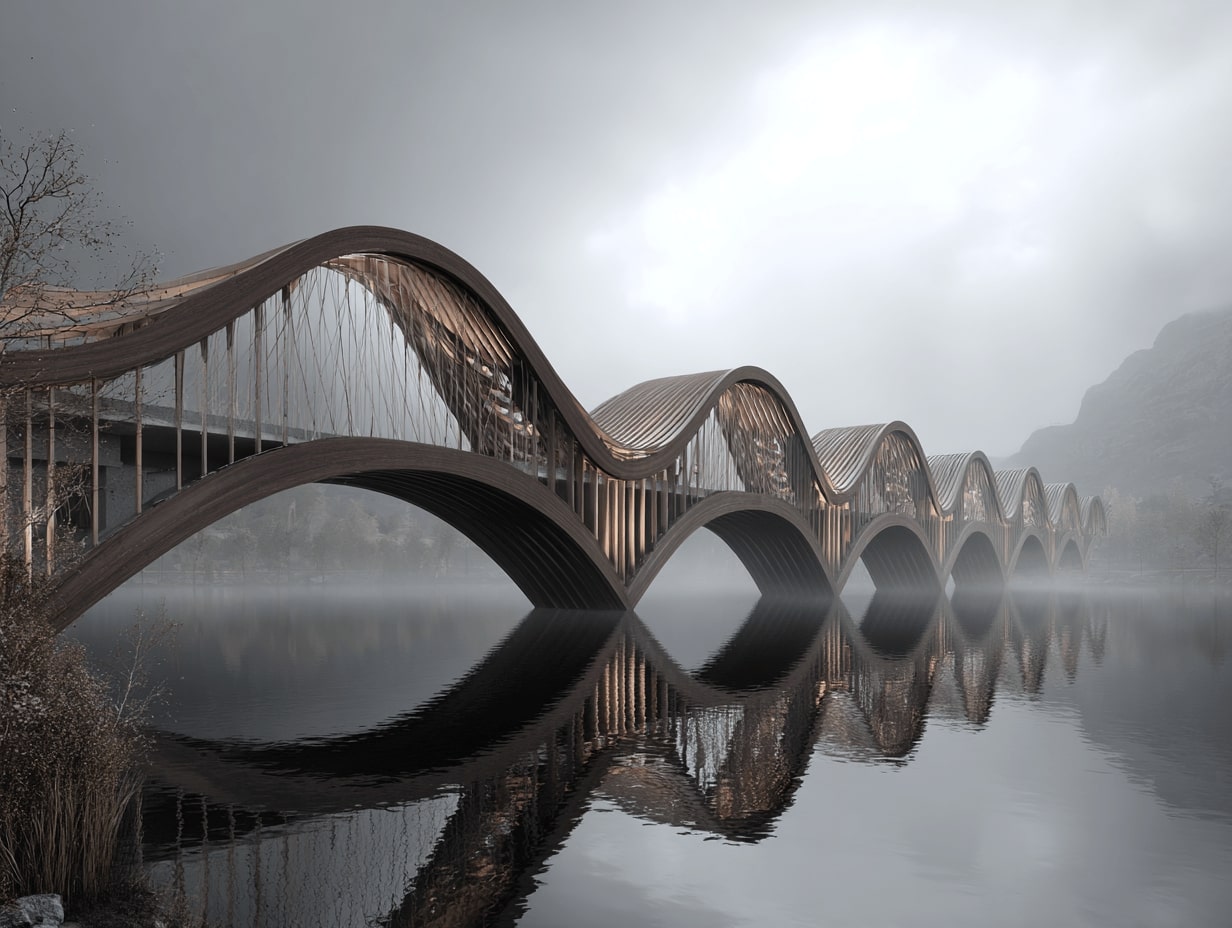- Home
- Articles
- Architectural Portfolio
- Architectral Presentation
- Inspirational Stories
- Architecture News
- Visualization
- BIM Industry
- Facade Design
- Parametric Design
- Career
- Landscape Architecture
- Construction
- Artificial Intelligence
- Sketching
- Design Softwares
- Diagrams
- Writing
- Architectural Tips
- Sustainability
- Courses
- Concept
- Technology
- History & Heritage
- Future of Architecture
- Guides & How-To
- Art & Culture
- Projects
- Interior Design
- Competitions
- Jobs
- Store
- Tools
- More
- Home
- Articles
- Architectural Portfolio
- Architectral Presentation
- Inspirational Stories
- Architecture News
- Visualization
- BIM Industry
- Facade Design
- Parametric Design
- Career
- Landscape Architecture
- Construction
- Artificial Intelligence
- Sketching
- Design Softwares
- Diagrams
- Writing
- Architectural Tips
- Sustainability
- Courses
- Concept
- Technology
- History & Heritage
- Future of Architecture
- Guides & How-To
- Art & Culture
- Projects
- Interior Design
- Competitions
- Jobs
- Store
- Tools
- More
Unleashing Creativity in Parametric Architecture: A Step-by-Step Guide
Discover the game-changing world of parametric architecture in this in-depth guide. Learn how technology like Rhino3D and Autodesk transform sketches into cutting-edge structures.

In the world of architecture, we’re witnessing a paradigm shift, with parametric design taking the center stage. It’s a game-changer, allowing us to create fluid, dynamic, and complex structures that were once deemed impossible.
Parametric design isn’t just about aesthetics; it’s a powerful tool that allows architects to respond to the unique constraints and opportunities of each project. With the right approach, we can turn challenges into innovative design solutions.
So, how do we design parametric architecture? It’s a process that involves a deep understanding of both the technical and creative aspects of architecture. We’ll guide you through this intriguing world, providing you with the knowledge you need to start creating your own parametric designs.

Table of Contents
ToggleUnderstanding Parametric Architecture
Parametric architecture is a topic shrouded in complexity and intrigue, deserving of a deep dive to fully unpack its intricacies. Since it’s both a science and an art, understanding parametric architecture demands a keen eye for detail, immense technical know-how, and an untamed imagination.
Definition of Parametric Architecture
Parametric architecture isn’t just a buzzword in the world of design; it’s a game-changing approach that is reshaping our built environment. It is the use of computer-aided design software, mathematical algorithms, and geometric rules to design and manage complex, dynamic architectural structures. By defining and manipulating certain parameters in the software, architects are able to create fluid and malleable structures that can adapt to various environmental conditions and project-specific constraints. It’s this blend of flexibility, creativity, and precision that defines parametric architecture.

Principles of Parametric Design
How does one go about designing parametrically? It all boils down to a few guiding principles:
- Embracing Complexity: One should not shy away from complexity when it comes to parametric design. Often, the most elaborate designs are a result of intricate and delicate parametric manipulations.
- Project Specificity: Each parametric design must be tailored to its particular project. This includes considerations like building site, climate, material constraints, and usage requirements.
- Early Involvement of Computation: Computation ought to be incorporated from the inception of the design process. Early inclusion ensures a smooth workflow and enables the creation of structures that might otherwise have been impossible.
These principles are the bedrock of parametric design, steering architects toward creating structures previously thought beyond the realm of possibility.

Tools and Software for Parametric Architecture
Delving deeper into the realm of parametric architecture, we cannot ignore the essential tools and software that provide architects the ability to create intricate designs. These assist in the complex process of blending art and science, facilitating the creation of dynamic structures adaptable to various conditions.
Popular Software for Parametric Design
There’s a wide range of software available in the market that is specifically designed for practicing parametric architecture. Let’s dig deeper into some of the most popular ones.
Rhino 3D: Rhino 3D boasts of versatility in its capability to support point clouds, polygon meshes, and solids. It’s often paired with Grasshopper – a visual programming language – providing a robust platform for parametric design.
Revit: A popular choice amongst architects and designers, Revit specifically excels in building information modeling (BIM). Its sophisticated tools allow architects to embed parametric information into their designs, significantly improving efficiency and project delivery.
Autodesk 3Ds Max: Known for its powerful rendering and animation tools, Autodesk 3Ds Max also offers parametric capabilities. Its benefit lies in the ability to visualize the end product in a more vivid and dynamic fashion.
This repertoire of software tools is continually evolving, keeping pace with the dynamism and complexity of parametric architecture. These powerful tools aid architects in pushing the boundaries of what’s possible, helping them create designs that are not only innovative but also adaptable.
Remember, the tool is only as good as the artist wielding it. It’s the architect who brings life to structures, transforming mundane exteriors into breathtaking landscapes. Therefore, it’s crucial to choose tools that compliment your design philosophy and help actualize your creative vision.
Moving forward, we’ll shed light on the importance of professional training for architects looking to venture into parametric design.

Examples of Parametric Architecture Projects
Having discussed the software tools fundamental to parametric design, let’s now dive into some iconic examples of this unique architecture style. These instances demonstrate how the intricate blend of art and science facilitated by tools like Rhino 3D, Revit, and Autodesk 3Ds Max can materialize stunning, innovative structures.
Case Studies of Parametric Buildings
One of the iconic landmarks that highlight the marvels of parametric architecture is the Heydar Aliyev Center in Baku, Azerbaijan. Designed by Zaha Hadid Architects, it is a striking visualization of waves and peaks, while its curvilinear forms seamlessly blend into the landscape. No less impressive is the Beijing National Stadium – fondly known as the Bird’s Nest. Swiss architecture firm Herzog & de Meuron utilized parametric design to create its distinctive nested look.
But let’s not forget about Sydney’s One Central Park, a green civil design wonder. Jean Nouvel and PTW Architects designed this high-rise building, covered in vertical gardens and mirror elements, controlling light projection onto the plant life. The parametric design assisted in choosing precise locations for these hundreds of mirror arrays.
Parametric Facades in Architecture
Parametric design isn’t only good for whole structures—it’s also exceptionally handy when creating building facades. A remarkable example of this is the Al Bahr Towers in Abu Dhabi. Aedas Architects designed this skyscraper with a dynamic, sun-responsive facade inspired by traditional Islamic lattice shading devices. The facade’s panels open and close according to the sun’s position, providing an optimal indoor climate while reducing energy consumption.
For a different approach, consider the Armadillo Vault in Venice. It’s a thin-shell structure built from limestone without any binding material, relying on computational design and digital architecture fabrication processes to hold itself together. It’s a prime example of how parametric tools can aid architects in creating not just visually stunning, but also highly functional and sustainable designs.

Benefits of Implementing Parametric Design
Parametric design offers various advantages that broadly extend from the conception phase to the actual execution of architectural designs. Its versatility and efficiency empower architects to push beyond traditional boundaries and craft extraordinary structures.
For every architect, having the power to test and visualise designs before their implementation is a fantastic capability. With parametric design, simulations can be executed to anticipate challenges, making risk mitigation strategies actionable way before any construction activity begins. Software tools such as Rhino 3D, Revit, and Autodesk 3Ds Max aid in creating highly accurate digital representations of the proposed structures. These tools ensure every detail is perfected, saving time and resources during the construction phase.
Additionally, parametric design promotes sustainability, another essential aspect of modern architecture. Through the application of parametric tools on projects like the Al Bahr Towers in Abu Dhabi, architects can optimise building facades to reduce energy consumption. Collectively, these optimised structures contribute to reducing the impact on the environment, a shared responsibility we all carry.
In essence, the multifaceted advantages of parametric design pivot around a central theme of enhanced creativity and adaptability. This capability allows modern architects to traverse the competitive landscape of building design with ease, ensuring they remain at the forefront of technological advancements. From creating landmark structures like Sydney’s One Central Park to crafting intricate designs like the Armadillo Vault in Venice, the adoption of parametric design fosters resilience in the face of multi-dimensional architectural challenges.
The benefits we’ve outlined are part of the reason parametric architecture continues to shape future cities. At the next stage, we will cover key tips on efficiently integrating parametric design tools into an architect’s workflow.

Conclusion
Let’s dive deeper into how we can effectively employ the strategies and tools of parametric design in our architectural projects. The incorporation of these techniques is not merely a technological advancement, but a means to unleash our creativity and innovation in the multidimensional world of design.
One-dimensional sketches are morphing into interactive 3D models, thanks to parametric software tools like Rhino 3D, Revit, and Autodesk 3Ds Max. With these cutting-edge technologies, we can aircraft our virtual designs with unparalleled precision. Therefore, this transformation paves the way for us to construct buildings that are nothing short of digital sculptures.
Think for a moment about Zaha Hadid’s iconic Heydar Aliyev Center or Herzog & de Meuron’s Beijing National Stadium. Their unique, futuristic forms could only have been birthed from the womb of parametric design. This is the level of artistic innovation that we are capable of achieving with the proper understanding and utilization of the tools at our disposal.
Moreover, building facades like the Al Bahr Towers take us a step further. This project is an extraordinary testament to the functional and sustainable advantages of parametric design. We can create structures that not only serve us but also care for our environment.

Parametric design also allows us to experiment with our creations, fine-tuning them until we have achieved perfection. Using visualization tools enables us to virtually “walk” through our designs, experiencing them in a realistic three-dimensional space. Our ideas are no longer confined to paper or screen but can be explored and expanded in numerous ways.
Furthermore, learning to integrate parametric design into our workflows augments our procedural efficiency. This results in collaborative communication, a seamless design process, and a dramatic reduction in both time spent and mistakes made.
In the ensuing stage of our discourse, we will shed light on some of the intriguing case studies, underscoring the breakthroughs of parametric design in architecting future cities. The insights derived from these cases will equip us with the knack to weave parametric techniques into our design lexicon, catapulting us to the forefront of technological advancement. So, keep reading, because our exploration into the promising realm of parametric design is just getting started.
Submit your architectural projects
Follow these steps for submission your project. Submission FormLatest Posts
Top 10 Examples of Parametric Architecture Around the World
Parametric architecture is reshaping global design through computational tools that generate fluid...
10 Notable Architects Who Excel in Parametric Design
Discover 10 leading architects who excel in parametric design, showcasing how computation,...
Parametric Design in Bridge Architecture: From Idea to Ribbon-Cut
Parametric design in bridge architecture: how data, rules, and optimization speed iterations,...
8 Principles of Parametric Architecture You Should Know
Parametric architecture merges computational logic with creative exploration, allowing designers to generate...












Leave a comment